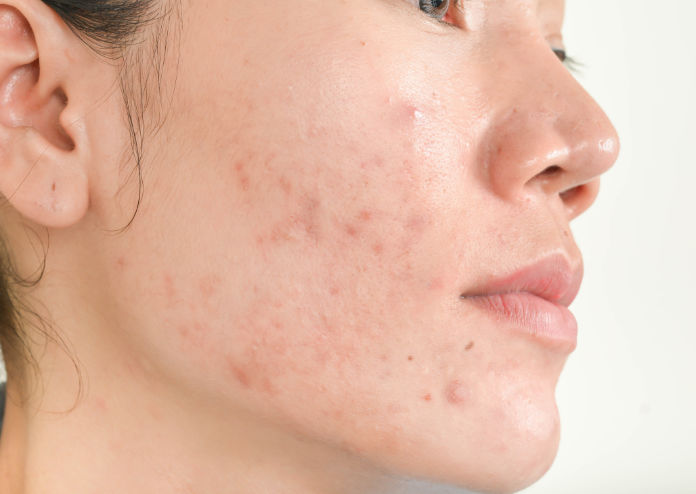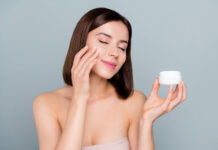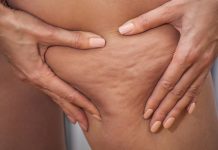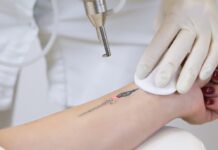Unless you were extremely lucky, chances are, when you were a teenager you experienced acne of some sort, whether it was a smattering of spots or a serious outbreak. By the time you reached adulthood, though, with a bit more luck the zits disappeared. But what causes adult acne and what can you do about it?
What is adult acne and what are the symptoms?
“The most common cause of acne is dead skin cells blocking hair follicles and allowing bacteria to build up,” says Dr Faye Christopherson, medical officer at Push Doctor. “What separates adult acne from the spots you get as a teenager is that they tend to be focused on the lower half of the face, particularly the jawline. The blemishes are often larger and redder, compared with the blackheads and whiteheads of your younger years.”
Who does it affect?
Research from the International Dermal Institute indicates that acne is rising in adulthood, with women most likely to be affected. A 2012 study published in the Journal of Women’s Health found that acne affects nearly half of all women aged 21 to 30, a quarter of women aged 31 to 40, and 12% of women aged 41 to 50.
What causes adult acne?
“There are many reasons as to why adults can experience acne,” says Lisa De-la-Plain, professional beauty therapist and co-founder of Beauty Flash.
“One in particular can be a change in hormonal activity. As we move through the various stages of our life, our hormone levels fluctuate, and an imbalance can lead to breakouts.
“This is because producing more hormones stimulates the oil glands and hair follicles in the skin, leading to an inflammatory reaction and acne.”
“Studies suggest that 80% of adult acne cases affect women, a trend that has been attributed to hormonal changes,” agrees Christopherson. “It can also be a side effect of certain medications.”
Environmental factors
Then there are environmental factors, such as pollution and weather, that can cause a flare-up.
“An increase in oil production, due to heat and humidity in the summer and surface dehydration in the winter months, can all encourage an acne breakout,” De-la-Plain says.
If your experience of acne as an adult is different to your teenage years, that’s because your skin has changed, too.
“Your skin cell turnover starts to slow down as early as your 20s. This means dead skin cells accumulate on the surface of the skin, which can clog your pores and cause acne,” De-la-Plain explains.
What does adult acne look like?

Adult acne is more likely to manifest as spots around your mouth and jaw, as opposed to the T-zone.
“This is a tell-tale sign for hormonal flare ups, as oil glands, stimulated by excess hormones, are found in the chin area.”
How can I treat adult acne?
“Crucially, adult acne shouldn’t be treated in the same way as teenage acne. As adult acne results in different sorts of blemishes, you’ll need to ask your doctor about the best prescription medication,” stresses Christopherson.
“Options include a cream containing vitamin A, which will unclog your follicles, anti-inflammatories or oral contraceptives to regulate your hormonal balance. Your doctor will choose the best treatment based on the type and severity of your symptoms.”
Could my diet be contributing to my adult acne?
“Certain food types can cause a spike in your blood sugar, which prompts your body to release insulin,” says Will Hawkins, nutritionist at Push Doctor. “Excess insulin in your blood can trigger your oil glands and increase your risk of acne.
“Foods that can do this include high-glycaemic carbs such as white pasta, white rice, white bread and sugar. Other studies have connected adult acne with components of the so-called ‘Western diet’, such as high-glycaemic carbs, dairy and trans fats.”
What food types should I consume to avoid breakouts?
“To lower your risk, try and eat more low-glycaemic carbs, such as whole grains, oats, sweet potato, legumes, lentils, peas, fruit and non-starchy vegetables,” says Hawkins. “These will keep your insulin levels steady and lower your risk of triggering an acne outbreak.
“There are also plenty of other nutrients that can lower your chances of acne. For example, zinc has been shown to keep your skin healthy. It’s found in lamb, beef, chicken, nuts and seeds, dark chocolate and spinach, among other things.
“Vitamins A and E are useful in the production of collagen, which is good for your skin health. These two vitamins also help damaged skin heal quicker and reduce the chances of permanent scarring as a result of acne. Vitamin A can be found in orange fruit and veg, such as carrots, apricots, sweet potatoes, butternut squash, melon and mango.
“Vitamin E, on the other hand, is found in particularly high amounts in seeds and dark leafy greens. Many fruits and vegetables are also powerful antioxidants, which can reduce cell damage and keep your skin clear and healthy.”
What skincare routine should I follow?
Skincare is the first step, but it’s not just a case of whacking on some tea tree oil and hoping for the best. A more holistic approach is best, our expert advises. Here’s what to do if you’re suffering with mild to moderate adult acne.
Back to basics
“A simple routine is often the most effective for acne sufferers, and cleansing and treating your skin twice a day is the best way to keep breakouts at bay,” De-la-Plain says. But make sure you tailor your products according to your skin type.
“If your skin is prone to oiliness, choose a cleanser like Medik8 Clarifying Foam, available on Amazon, which uses salicylic acid to stimulate natural exfoliation to help clear clogged follicles.
Another great choice is The Inkey List Salicylic Acid Cleanser, also available on Amazon.
“If you have sensitive skin, look for products containing lactic acid or hydrating ingredients like glycerine, as these aren’t as drying as those made for oilier skin types.”
Be careful if you have started investing in anti-ageing skincare too, she warns: “These creams can be very rich, overload the skin and cause breakouts in acne-prone individuals.
“Look for oil-free products like Dermalogica Oil Free Matte SPF 30, available on Amazon, which will protect you from the ageing effects of UV and unwanted spots.”
A slightly cheaper option is Eucerin Dermo Pure Hydra Soothing Compensating Cream, available on Amazon.
Another great choice is Kate Somerville Nourish Daily Moisturizer, available on Amazon.
Lose the layers
While it may be tempting to load up your skin with every anti-acne potion and lotion you can find, that could irritate your spots and make them worse.
“If you still want to use several products in your routine, to target other skin issues like sun damage and wrinkles, make sure you layer them from thinnest to thickest,” De-la-Plain says.
“If you don’t do this, they may cancel each other out. For example, acne ingredients like benzoyl peroxide, salicylic acid and lactic acid shouldn’t be mixed with retinol, as it will break down your skin barrier and lead to irritation.”
Pick the right spot treatment
With so many spot treatments on the market, how do you know which is best for your you?
“Consider what type of acne you have,” De-la-Plain says. “Do you have inflamed red bumps? If so, you’ll need a spot treatment containing benzoyl peroxide, which kills bacteria and calms redness.
“If you have blackheads and whiteheads, you’ll want something with salicylic acid like Dermalogica Overnight Clearing Gel, available on Amazon. It reduces excess oil and exfoliates dead cells from the skin’s surface.”
Don’t skip moisturiser
“While it might seem like a good idea to skip the moisturiser, if skin becomes too dry, the oil glands tend to overproduce oil and can make acne worse,” De-la-Plain says. “Hydrating the skin properly re-balances oil glands and helps control breakouts.
“Pick a light or gel consistency, like Medik8 Balance Moisturiser & Glycolic Acid Activator, available on Amazon. It has anti-inflammatory properties, which also controls shine and oil production.”
Be a sleeping beauty
We all know that getting enough ‘beauty sleep’ helps our complexion, but did you know that your bed could be causing breakouts?
“Not washing your pillowcase regularly can result in a build-up of dirt, dead skin cells, and even breakout-causing bacteria,” De-la-Plain warns.
“To prevent new breakouts from developing overnight, switch your pillowcase either every few days or daily, dependent on how prone to acne you are.
“Even the type of pillowcase matters. Although silk pillowcases are recommended for fighting fine lines and frizz, breathable fabrics like cotton may be better when it comes to preventing breakouts.”
Try this Silentnight Brushed Cotton Fitted Sheet and Pillowcase Set, available on Amazon in 4 colours.
If all else fails, see a professional
Everyone suffers the odd spot, but if your adult acne is persistent, don’t suffer in silence.
“If you’ve tried everything, you’re still breaking out and your acne is causing psychological problems or is impacting your work or social life, it’s time to visit your GP,” De-la-Plain says.
“If your skin issues are severe, they will refer you to a dermatologist for a further skin assessment, to try and solve your concerns.”
You may also be interested in…
This article may include affiliate links to products and services where we may receive a small fee to support the running of this site if you make a purchase or is a sponsored article from one of our select editorial partners providing valuable advice and information to our readers.









































































